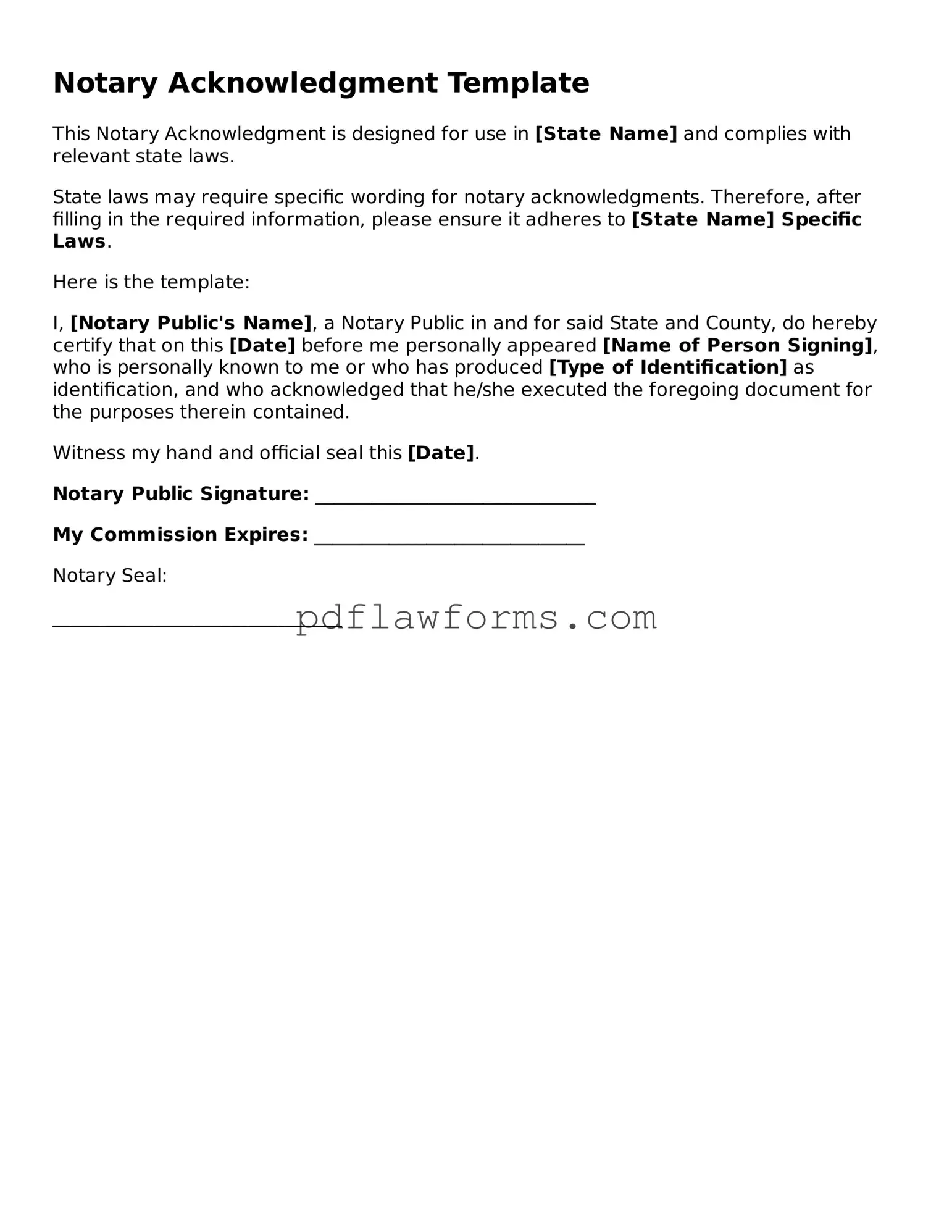Filling out a Notary Acknowledgment form can seem straightforward, but many people make common mistakes that can lead to delays or complications. One frequent error is not including the correct date. The date is crucial as it indicates when the document was signed. If this information is missing or incorrect, it can create confusion about the timeline of events.
Another common mistake is failing to provide the signer's name as it appears on their identification. The name must match exactly to ensure that the notary can verify the identity of the individual. Any discrepancies can result in the acknowledgment being deemed invalid.
People often forget to include the appropriate title or description of the document being notarized. This detail helps clarify the purpose of the notarization and provides context for future reference. Without it, the notary may not be able to confirm what was acknowledged.
Additionally, some individuals neglect to check the notary’s signature and seal. The notary must sign and stamp the form in the designated area. If either is missing, the acknowledgment may not be accepted by institutions requiring notarization.
Another mistake is using an outdated form. Notary laws can change, and using an old version of the acknowledgment form may not comply with current regulations. Always ensure that you have the latest version to avoid issues.
In some cases, people may overlook the requirement for a witness, if applicable. Certain documents necessitate a witness in addition to notarization. Failing to include a witness can invalidate the entire process.
Another frequent oversight is not providing sufficient information about the notary. The acknowledgment should include the notary's name, commission number, and expiration date. This information is essential for verifying the notary's authority and legitimacy.
Lastly, individuals sometimes rush through the process without reading the entire form carefully. This can lead to missing critical information or making errors that could have been easily avoided. Taking the time to review the form thoroughly can save a lot of hassle later on.
